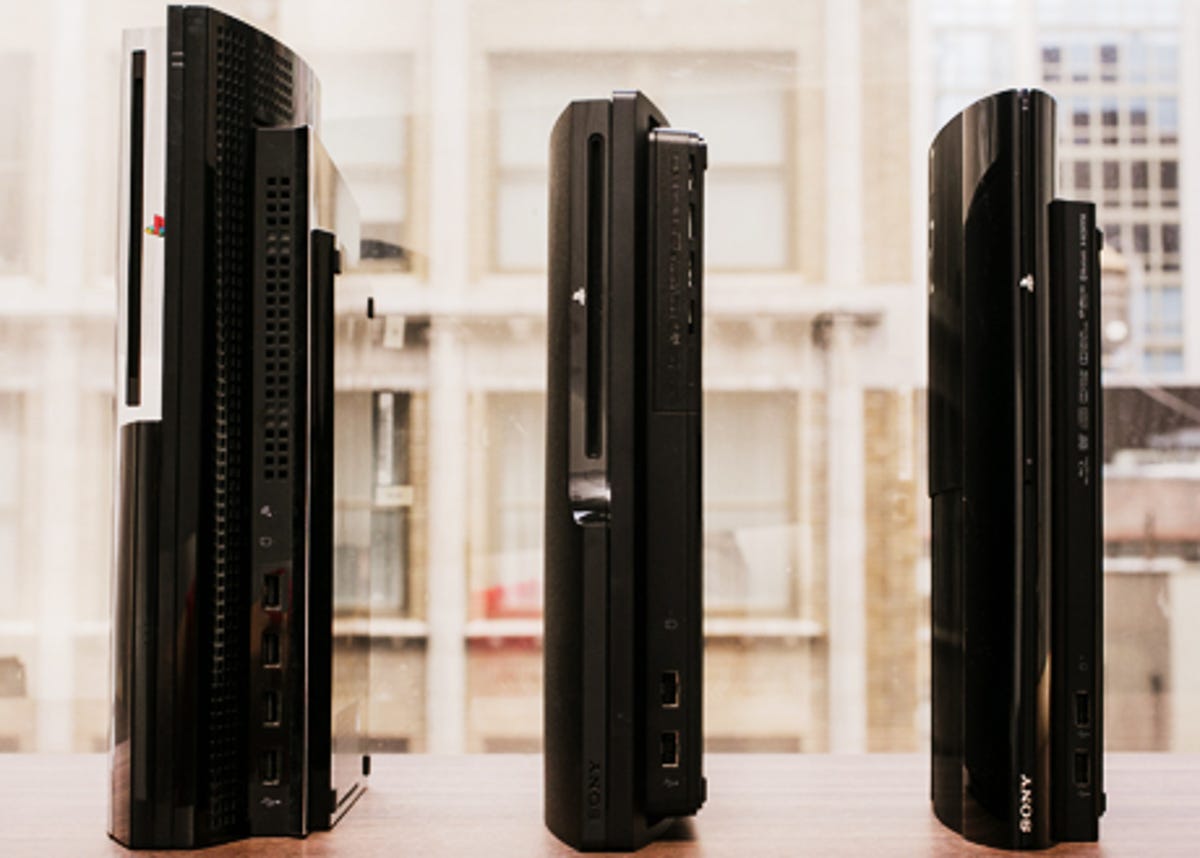
An early (and unsuccessful) partnership with Nintendo (1991)
While still a newcomer to the world of video game consoles when compared to Nintendo, Sony has been manufacturing PlayStation hardware since 1994, almost 20 years. As we near the probable announcement of the fourth generation of PlayStation hardware, let's take a look at the triumphs and shortfalls of this iconic brand.
Sony's first foray into living room game consoles came via a planned partnership with Nintendo. Sony was to create a CD-ROM add-on for the Super Nintendo, but the deal fell through shortly after its 1991 announcement.
Sony PlayStation (1994)
Sony PSone (2000)
Sony PlayStation 2 (2000)
The game console that cemented Sony's leadership in the field, the PlayStation 2's importance is hard to overstate. Released in October 2000 in the U.S. for $299 (and seven months earlier in Japan), the PS2 platform, including the "slimline" variant, was only discontinued very recently, after having sold more than 150 million units worldwide.
As part of the most crowded console field ever, the PS2 competed directly with the Sega Dreamcast, Microsoft Xbox, and Nintendo GameCube. It was the last Sony living-room console to lack built-in memory or a built-in Internet connection (both were available through add-on devices). Much was made of the custom CPU, developed by Sony and Toshiba, and known as the Emotion Engine.
PS2 Slim (2004)
A smaller, lighter, and less-expensive version of the PlayStation 2, this unit was widely known by its unofficial name, the PS2 Slim. Part of the thinning-down process included moving the power supply transformer to an external brick, and trading the slot-loading drive for a top-loading one.
A handful of games, such as Final Fantasy XI, which made use of the sold-separately PlayStation hard drive, could not be played on the PS2 Slim, as it lacked the requisite expansion bay.
The Slim hardware underwent several minor revisions itself, and ended up weighing less than one-third of what the original PS2 did. Another variant, called the PSX, was briefly sold only in Japan. It combined a DVR and DVD burner with PS2 game support.
PlayStation 3 (2006)
Following the market-leading PlayStation 2, the third-gen Sony video game console innovated in some bold ways. It added motion control, via the new six-axis wireless controller, and it was the first -- and to date, only -- game console with a Blu-ray drive.
Of those two experiments, the motion control was rarely used, but Blu-ray has becomes the default HD content format, fighting off a challenge from the short-lived HD-DVD format (which was available in the Xbox 360 as an add-on peripheral).
Released in November 2006, the console's original retail price was $499 (for the 20GB HDD version) and $500 (for the 60GB HDD version). The price has since come down significantly since then, and the PS3 has sold about 77 million units, or about half what the PS2 sold.


